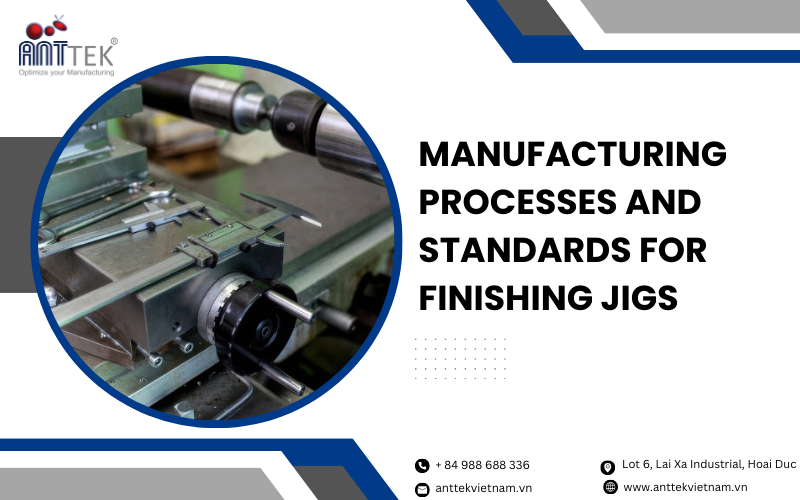Anttek Vietnam specializes in high-precision POM plastic machining for molds, jigs, EV batteries, and semiconductor components. With advanced CNC systems and ISO-certified quality control, we deliver stable, accurate, and globally trusted solutions.
4-axis CNC machining offers superior precision and efficiency compared to 3-axis machines, enabling complex, multi-surface operations with fewer setups.
This technology reduces production time, enhances quality, and minimizes material waste.
Anttek Vietnam provides advanced 4-axis and 3-axis CNC machining services, ensuring high-quality, cost-effective manufacturing solutions.
The process of finishing jigs involves multiple precise steps—from design, material selection, and fabrication to inspection and surface treatment—to ensure accuracy and durability.
High-quality finishing guarantees each jig meets strict technical and performance standards in real-world production.
Anttek Vietnam provides professional finishing jig and precision machining services, delivering reliable and efficient solutions for every industry.
C chamfering and R rounding are two simple and effective edge machining methods. Let’s explore their differences, including shape, purpose, and applications in manufacturing. Important considerations and guidelines for interpreting technical symbols will help achieve machining quality and safety. 1. What is C Chamfering? Straight Edge Chamfering (C Chamfering) Straight edge chamfering, also known as…
Coating layers play a vital role in protecting mechanical components from corrosion, wear, and harsh environmental conditions. Additionally, they enhance the lifespan and aesthetic appeal of products. However, when coatings peel, components degrade rapidly, severely impacting production and equipment durability. What causes this phenomenon, and what are the most effective remedies? I. Causes of Coating…
Many customers wonder whether they should apply anti-rust oil when looking for ways to preserve mechanical components. While anti-rust oil provides excellent protection, it also comes with some limitations. 1. What is Anti-Rust Oil? Anti-rust oil (also known as corrosion protection oil) is specifically designed to protect mechanical components from corrosion, particularly in humid environments…
The workpiece clamping stage is crucial in mechanical machining, where the raw material is securely fixed to the machine. This process not only enhances machining accuracy but also protects machinery and cutting tools, ensuring the production of high-quality products. Knowledge of selecting the right tools and ensuring worker safety will improve clamping skills, ultimately boosting…
What is CNC Wire Cutting? CNC wire cutting is a high-precision machining technology that uses a metal wire to cut materials such as metal, aluminum, and steel. This method allows for the fabrication of parts with complex shapes and high precision. However, an important issue many manufacturers face is dimensional deformation during wire cutting. In…
Powder coating is a popular surface treatment method in the mechanical industry, providing protection against corrosion, impact, and other environmental factors. To ensure the quality and effectiveness of the coating, adherence to powder coating standards is critical. Below are the key standards that mechanical components must meet when using powder coating. Surface Preparation Standards To…
I. Overview of PU plastic and the common applications of bonding PU plastic to metal 1.1 What is PU Plastics? Polyurethane (PU) plastic is a type of polymer known for creating durable and robust coatings. Widely used in various industries, PU plastic offers outstanding features such as wear resistance, chemical resistance, and excellent elasticity. Bonding…









